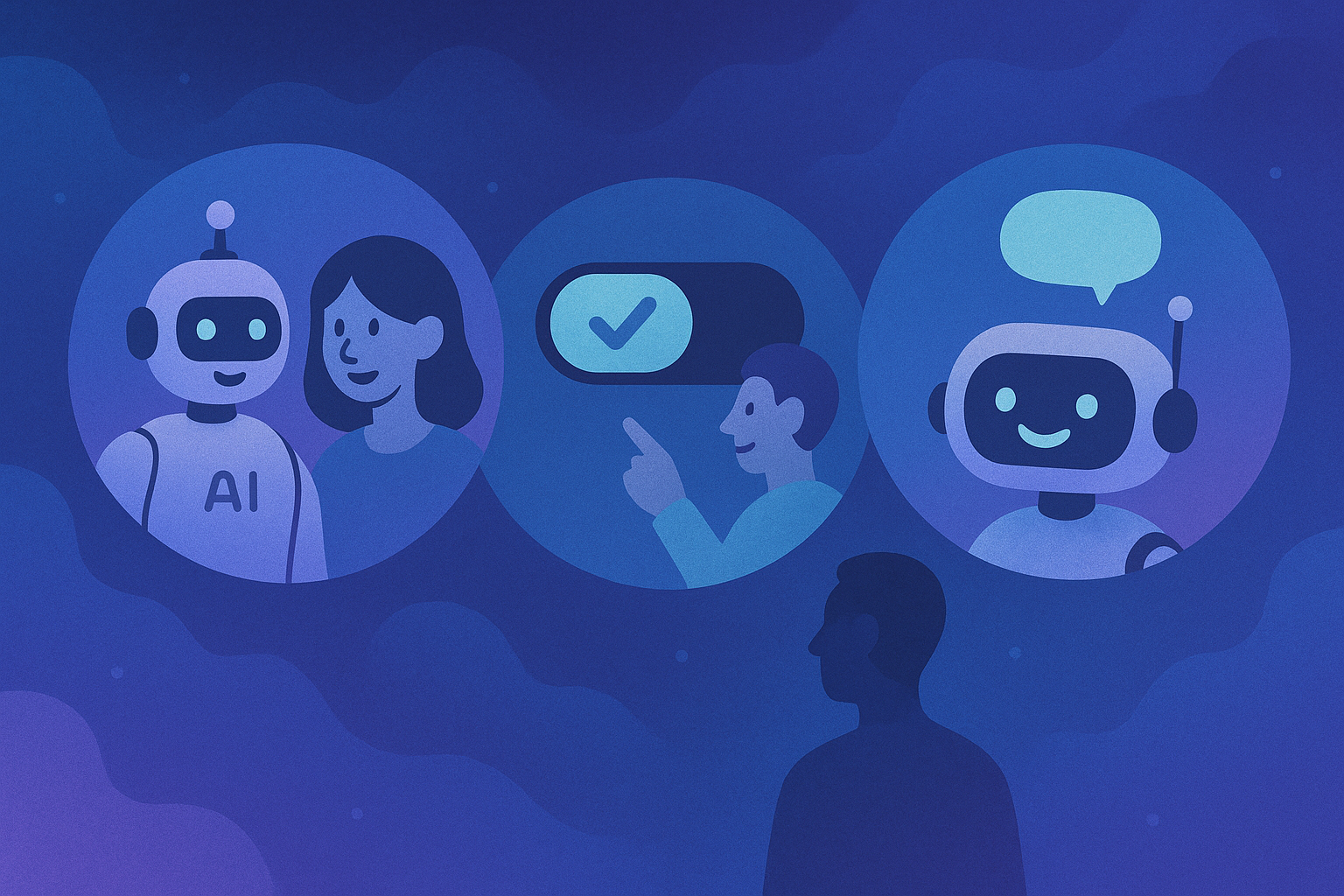Beyond the Black Box: Designing AI Experiences Users Actually Trust
We've all been there. You're using a new AI-powered feature, and suddenly it does something unexpected. Maybe it's suggesting products you'd never buy, displaying information that seems completely off-base, or making a recommendation that leaves you wondering, "How on earth did it come up with that?"
And just like that, trust is broken.
As someone who's spent years in UX design and who follows developments in AI implementation closely, I've become fascinated by one critical question: Why do users trust some AI systems but reject others?
The Trust Gap in AI Adoption
Here's a sobering reality: over 80% of AI implementations fail to deliver their expected value. Not because the technology doesn't work, but because people don't use it.
And why don't they use it? It usually comes down to trust.
Trust isn't just a nice-to-have in AI user experience, it's the entire foundation. Without it, even the most sophisticated AI investment becomes an expensive experiment that never delivers.
The Three Pillars of Trustworthy AI Experience
Based on extensive research and observation of successful AI implementations, I've identified a framework for building AI experiences that users actually trust and embrace. It's built on three fundamental pillars:
1. Transparency Without Overwhelming
Users need to understand what the AI is doing without drowning in technical details. This means:
- Explaining recommendations in human terms
- Making clear when AI is being used versus traditional functionality
- Providing appropriate confidence indicators
- Offering access to more information for those who want it
Consider financial services, where AI-based investment recommendations often go ignored by users. A simple "Why am I seeing this?" feature that explains each recommendation in plain English, connecting it to specific financial goals, can dramatically increase adoption.
2. Control at Critical Moments
People need to feel they're working with AI, not being controlled by it. This means designing for:
- User confirmation at key decision points
- Easy ways to guide, adjust, or override AI suggestions
- Clear feedback mechanisms
- Progressive levels of automation as trust builds
In healthcare applications, for example, successful AI symptom assessment tools allow users to adjust the importance of each symptom they report, ensuring they feel heard and respected. This control mechanism can increase both user satisfaction and diagnostic accuracy.
3. Continuous Improvement Through Feedback
Trust grows when users see the system getting better based on their input. This means creating:
- Simple feedback loops within the user journey
- Clear signals when feedback has been incorporated
- Personalization that visibly improves over time
- Acknowledgment when the AI gets something wrong
Marketing analytics platforms that implement one-click feedback systems for AI-generated insights can create a virtuous cycle where the system visibly improves for each user, driving deeper engagement.
Practical Implementation: Start Small, Build Trust
If you're incorporating AI into your product experience, you might be tempted to go big with flashy, highly automated features. My advice after studying dozens of successful AI adoptions?
Start small.
Begin with low-risk, high-value use cases where AI can clearly enhance the user experience without taking over completely. For example:
- Smart defaults that save time but can be easily changed
- Subtle suggestions that guide without dictating
- Background enhancements that make existing features work better
In retail, for instance, companies often find more success starting with AI-powered search that simply reorders results based on browsing history rather than implementing fully automated personalization across the entire shopping experience. This creates immediate value while allowing users to discover the benefits of personalization in a comfortable, low-stakes context.
The Human Element Remains Essential
The most successful AI experiences maintain a decidedly human element. They acknowledge limitations, handle errors gracefully, and maintain the brand's personality and voice.
When designing conversational AI for customer service, the most effective systems recognize when a customer is getting frustrated and smoothly offer to connect them with a human agent. This "escape hatch" often increases overall satisfaction with the AI system because users never feel trapped.
The Future of AI User Experience
As AI capabilities continue to evolve at breathtaking speed, the human side of the equation becomes even more critical. The organizations that succeed won't simply be those with the most advanced algorithms, they'll be the ones that create thoughtful, human-centered experiences that build trust and deliver genuine value.
The most powerful AI implementations don't feel like interacting with technology at all, they feel like having a particularly insightful colleague who understands exactly what you need and helps you accomplish it with minimal friction.
That's the gold standard for AI UX: technology that feels less like a tool and more like a trusted partner.
Building Trust from Day One
If you're embarking on an AI implementation journey, make user trust a central consideration from the very beginning. Ask questions like:
- Where in the user journey would AI add the most value with the least disruption?
- What level of explanation would users need to feel comfortable with AI-driven decisions?
- How can we give users meaningful control without overwhelming them with options?
- What feedback mechanisms will help the system visibly improve over time?
These considerations might seem secondary to the technical implementation, but they're actually the primary determinants of whether your AI investment will succeed or join the 80% that fail to deliver value.
Ready to Design AI Experiences Users Actually Trust?
If you're navigating the complex landscape of AI implementation and want to ensure your investment translates into user adoption and business value, I'd love to chat. I'm passionate about helping organizations create AI experiences their users actually trust and embrace.








